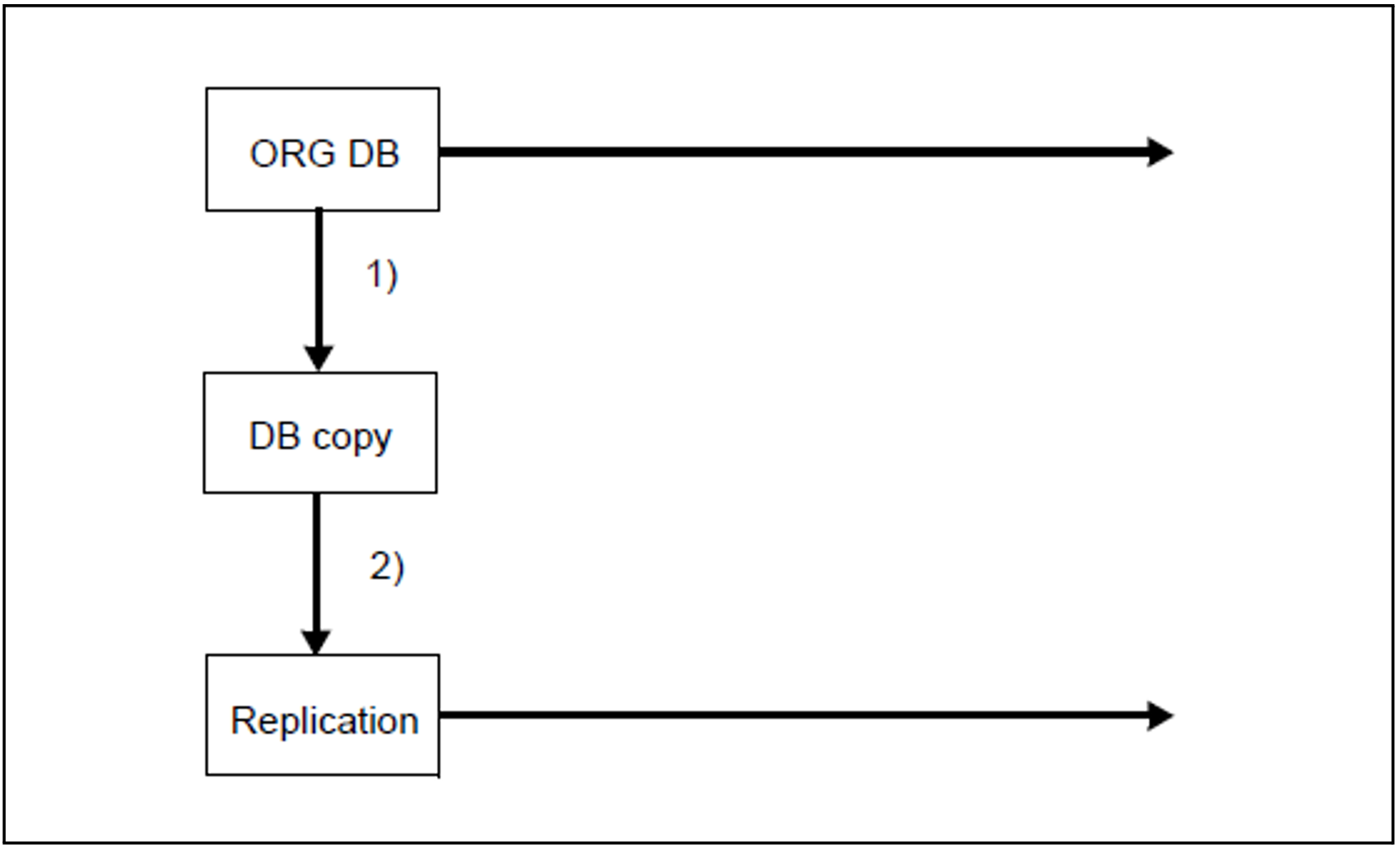Creating a replication from a SESAM/SQL backup copy
The database administrator uses the utility statement CREATE REPLICATON to create a replication from a SESAM backup copy generated using COPY CATALOG. The replication is identical to the original database at the time of backup.
The CAT-REC file which is specified in CREATE REPLICATION identifies a backup copy. It has to contain the required database backup as the last backup. The CAT REC copy generated when COPY CATALOG was executed meet this requirement. The replication's CAT-REC file which was created in the course of CREATE REPLICATION contains the status of the original at the time COPY CATALOG was executed.The backup used by CREATE REPLICATION must always be a full database backup on magnetic tape cartridge or disk created with COPY CATALOG.
Creating a replication from a non-SESAM backup copy
The database administrator can create a replication or a partial replication from a foreign copy. For information on generating a foreign copy, see section “Using foreign copies of a database”.
You can create a partial replication by using the FOR SPACE parameter to specify the required user spaces. The replication always contains the catalog space. The created replication can only be subsequently updated if all the spaces of the replication are handled using the Logging facility in the original.
After the replication has been created it can be immediately used for recovery. In addition, it is automatically added to the DBH's SQL database catalog.
Like any other database, the replication can be entered in the SQL database catalog using the ACCESS=REPLICATION parameter in ADD-SQL-DATABASE-CATALOG-LIST on start-up or can be added using the same parameter with the administration statement ADD-SQL-DB-CATALOG-ENTRY while the DBH is running (see the “Database Operation” manual). The original database and replication can use the same logical name provided they run under different DBHs.
A replication can be added to SQL database catalogs of different DBHs for recovery.
Figure 20: Create replication
Creating a SESAM backup copy of the original database
Creating a replication from the copy

